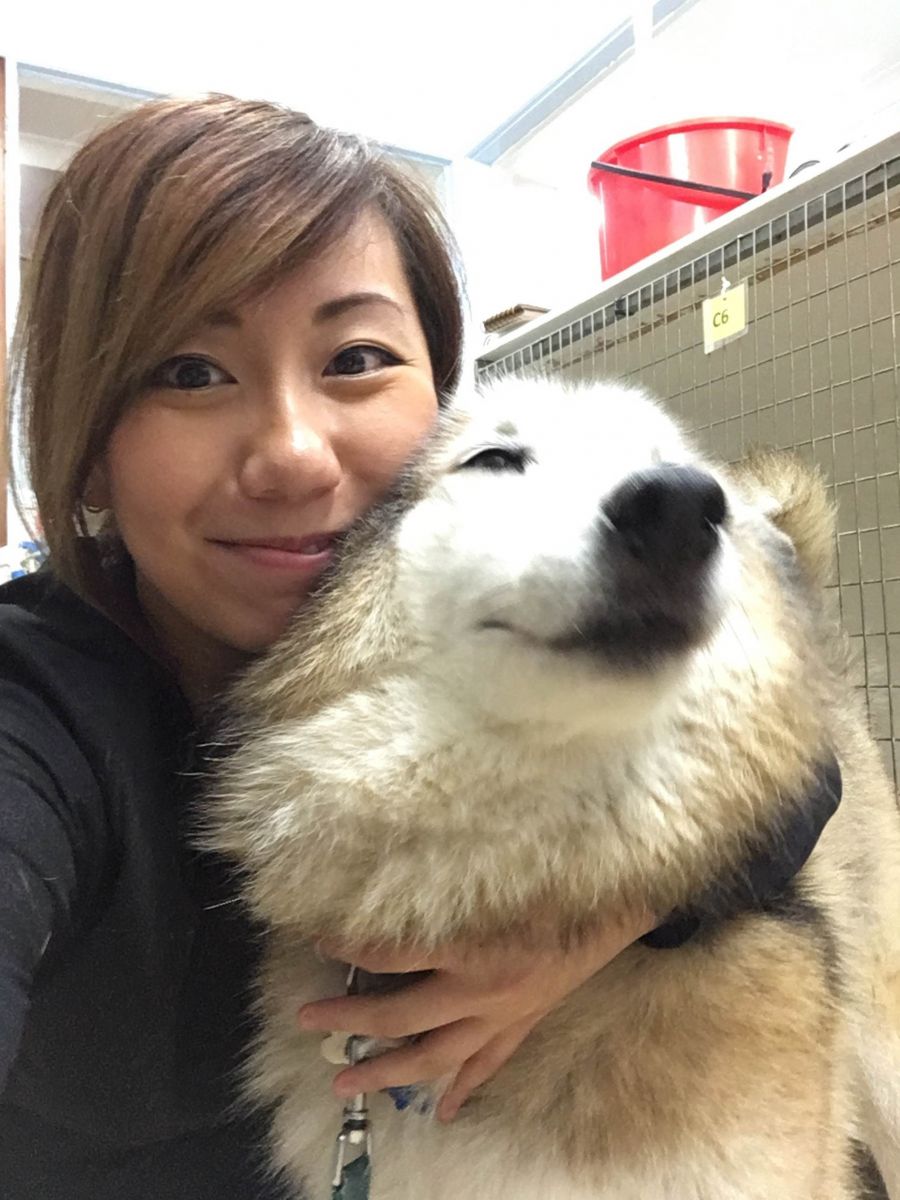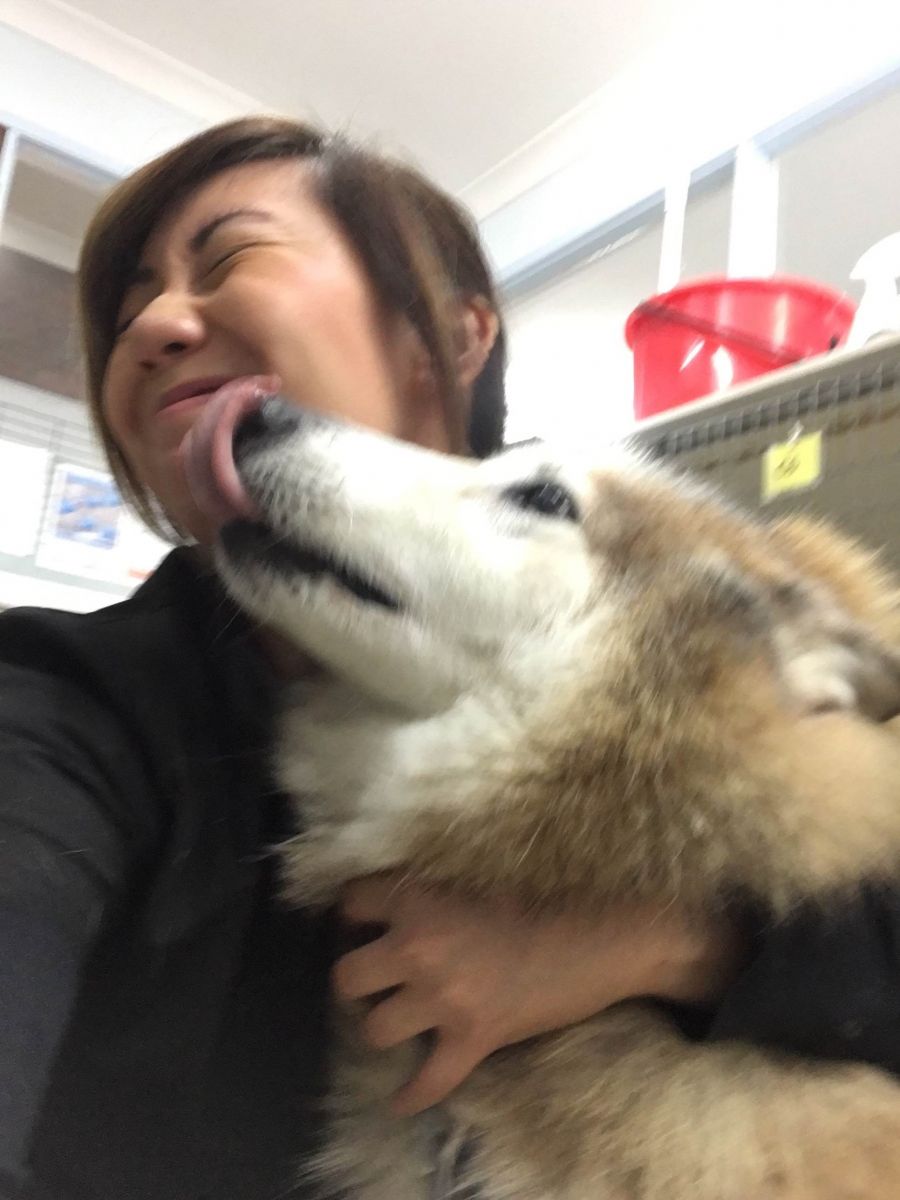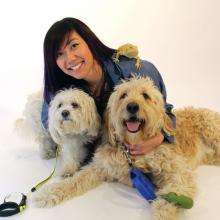Veterinary medicine is exciting because you never know what will come through that door. A seemingly routine day can become hectic in a flash and it’s up to the vet team to be ready for anything. I’ve been learning plenty about emergency medicine this past week: From cystotomies to dog attacks to caesarians and more, it’s never a quiet day at MRVH!
This little pup in particular was enjoying a walk with her owners, when as they were passing by a house in their neighbourhood, a much bigger dog escaped from a garage as it was opening and very suddenly attacked her. Fortunately, the owners of this lucky little girl brought her in right away for treatment. It was touch and go for a while there, but after cleaning up the wounds, putting in some drains, and a week of hospitalization, I’m glad to say that she is feeling much better and will hopefully get to go home soon!
.jpg)
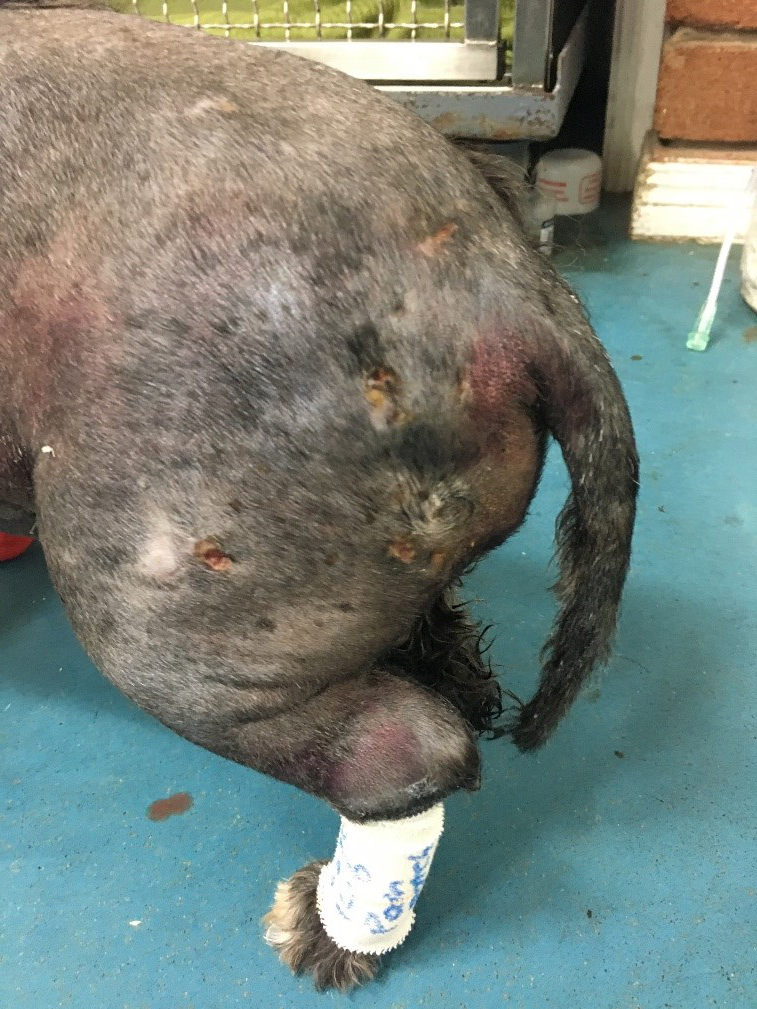 Notice all of the swelling and redness. The other dog must have grabbed her around the back end, latched on and shook. Because of the large amount of dead space (unnatural space between the layers of tissue), created from the tearing of the tissues via shaking, the vets had to insert multiple drains to promote drainage of the inflammatory fluids. If they were to have sutured up the wounds without inserting a drain, the dead space would fill up with the fluid and impede healing.
Notice all of the swelling and redness. The other dog must have grabbed her around the back end, latched on and shook. Because of the large amount of dead space (unnatural space between the layers of tissue), created from the tearing of the tissues via shaking, the vets had to insert multiple drains to promote drainage of the inflammatory fluids. If they were to have sutured up the wounds without inserting a drain, the dead space would fill up with the fluid and impede healing.
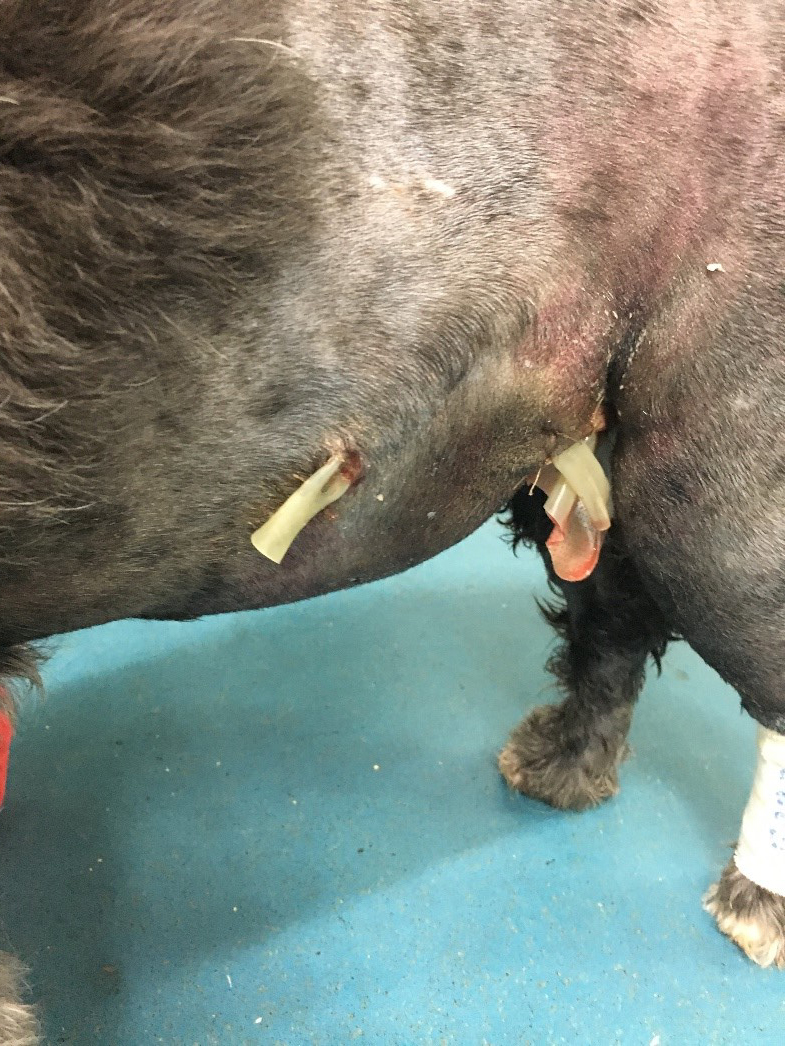
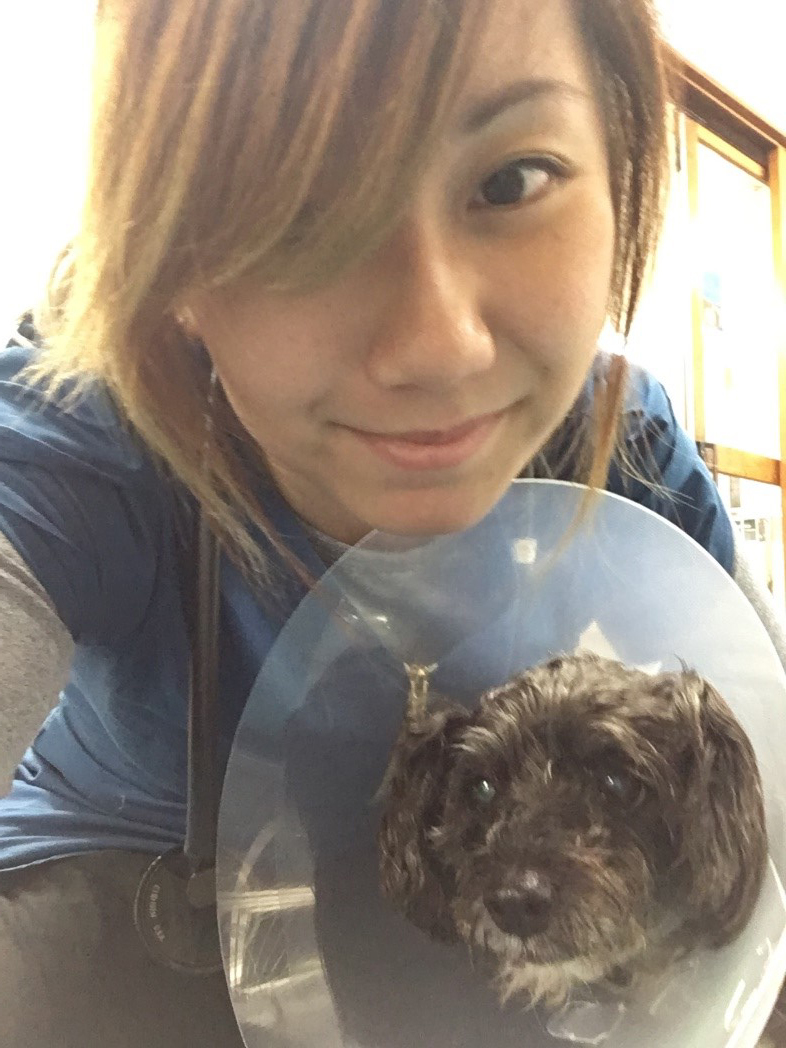
But the greatest feeling of all is when you see the fruits of your effort, and that it was well worth it. Seeing this little one eat after being so depressed, painful, and miserable, was extremely rewarding.
Around the same time, another dog presents with a 4-day history of anorexia, vomiting, diarrhea, and a painful abdomen. Radiographs yielded potentially something in the pylorus of the stomach (possibly thickened), although it was difficult to interpret due to the overlapping of tissue opacities. It was then decided to perform an exploratory laparotomy, and to our surprise we discovered multiple ~1cm lumps lining the inside of the stomach near the pylorus. Pathology of the lumps came back as idiopathic gastric polyps. Although usually benign, when there are enough of them, they can actually block the pyloric antrum, causing obstruction, which is likely the cause of this dogs clinical signs.
But the fun didn’t end there. With all the excitement happening in the small animal hospital, of course the large animal hospital had to receive an emergency call out as well. We received a frantic call from a client, saying that their horse had been running around the paddock and somehow had managed to get itself stuck in a fence. So we packed up everything that we thought we could potentially need, and set out. We weren’t exactly sure how severe the wound was, so we had a wide assortment of pharmaceuticals and materials to prepare for the worst. What happened was that the horse had reared up on its hide legs and in the process of coming back down, landed on top of the fence, thereby lacerating its abdomen. By the time we had arrived, the clients were able to extricate the horse from the fence. Luckily, although the wound was fairly large (approximately the size of an iPad mini), it did not puncture deep enough to rupture into the abdomen, significantly improving the horse’s prognosis.
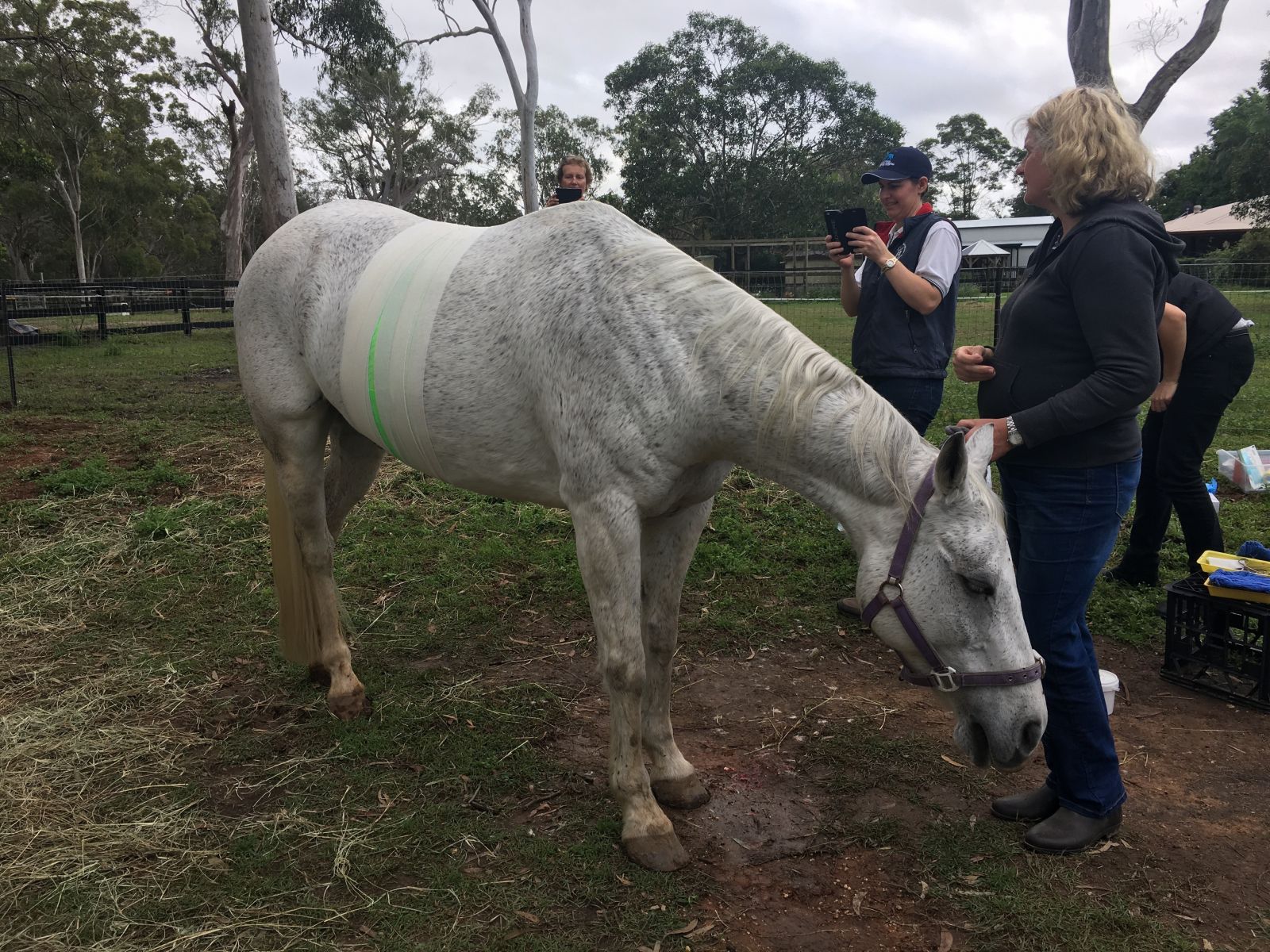
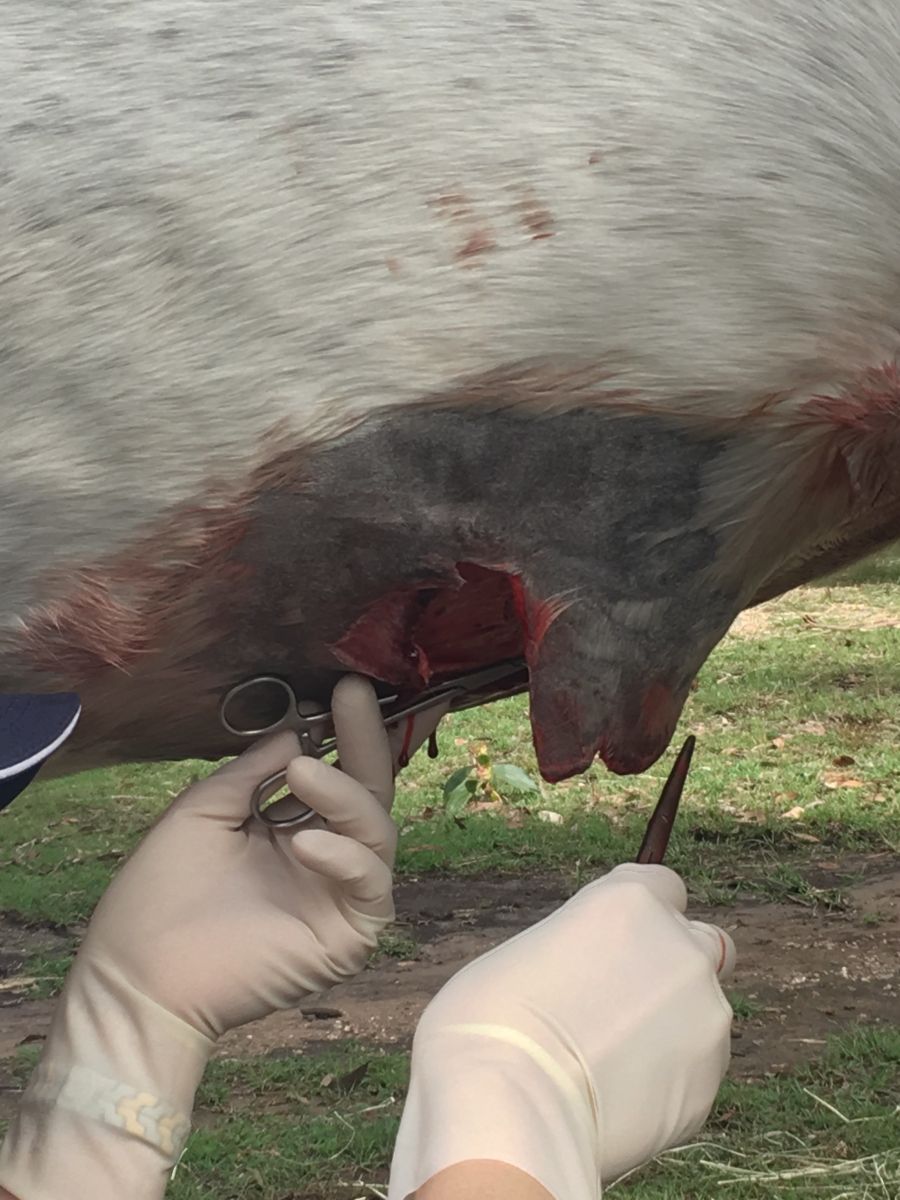 Later on in the week, a pregnant dog presented with an inability to urinate, lethargy, and an overall state of being unwell. Radiographs yielded many cystic calculi (bladder stones) and straight into surgery we went. After much probing, flushing, searching, we managed to remove all the stones in record time to minimize the anaesthetic risk on the mother and on the pups.
Later on in the week, a pregnant dog presented with an inability to urinate, lethargy, and an overall state of being unwell. Radiographs yielded many cystic calculi (bladder stones) and straight into surgery we went. After much probing, flushing, searching, we managed to remove all the stones in record time to minimize the anaesthetic risk on the mother and on the pups.
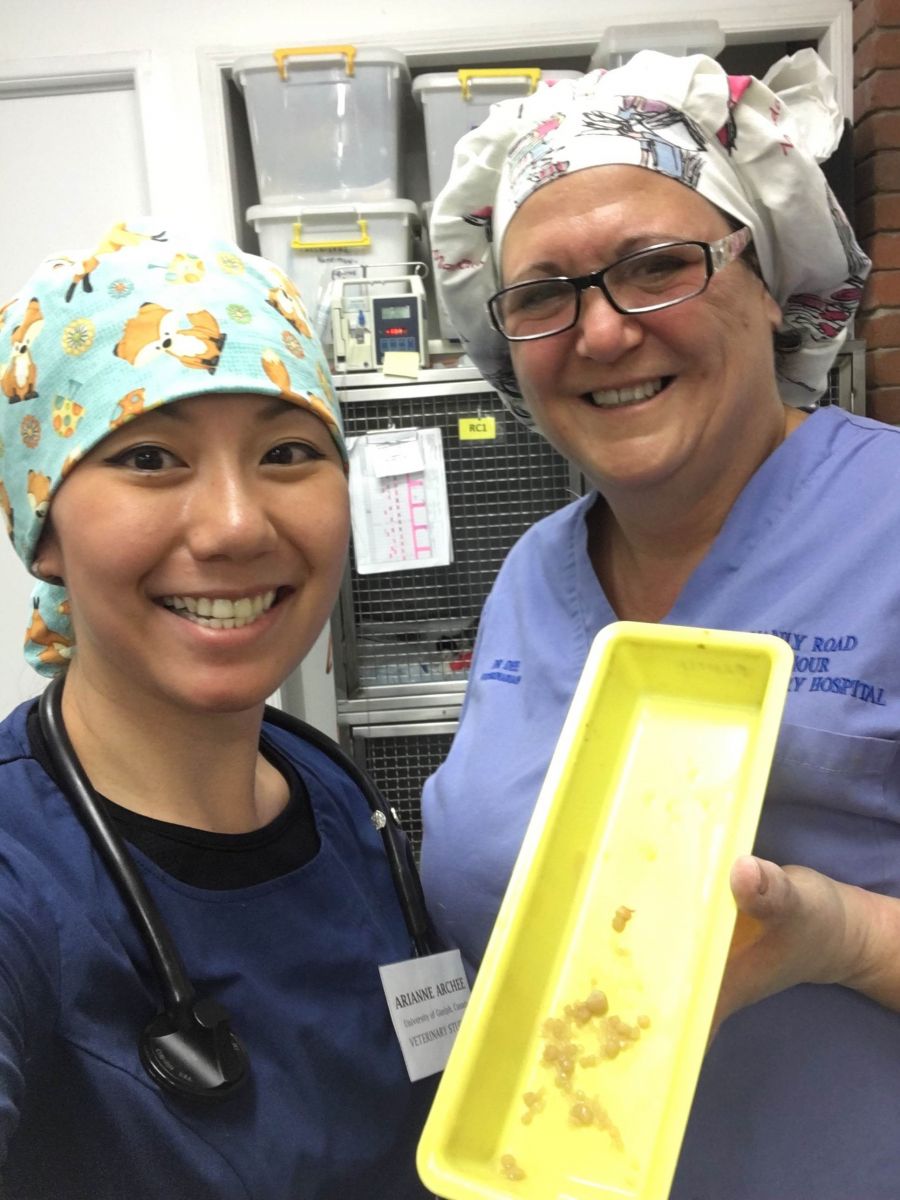
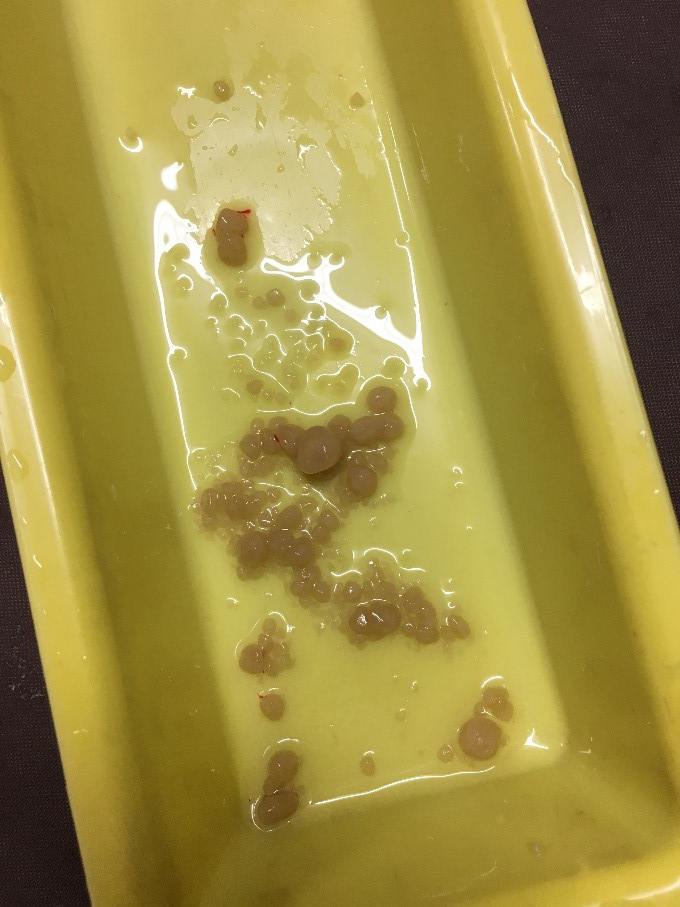
And with all that excitement, I saw my first case of flea allergy dermatitis (FAD). FAD usually presents as pruritic (itchy), dry, and possibly scabby skin on the hind end. The fleas are seen to preferentially bite the back end first, leading to the characteristic pattern of presentation. And this dog was a perfect representation of what it usually looks like.

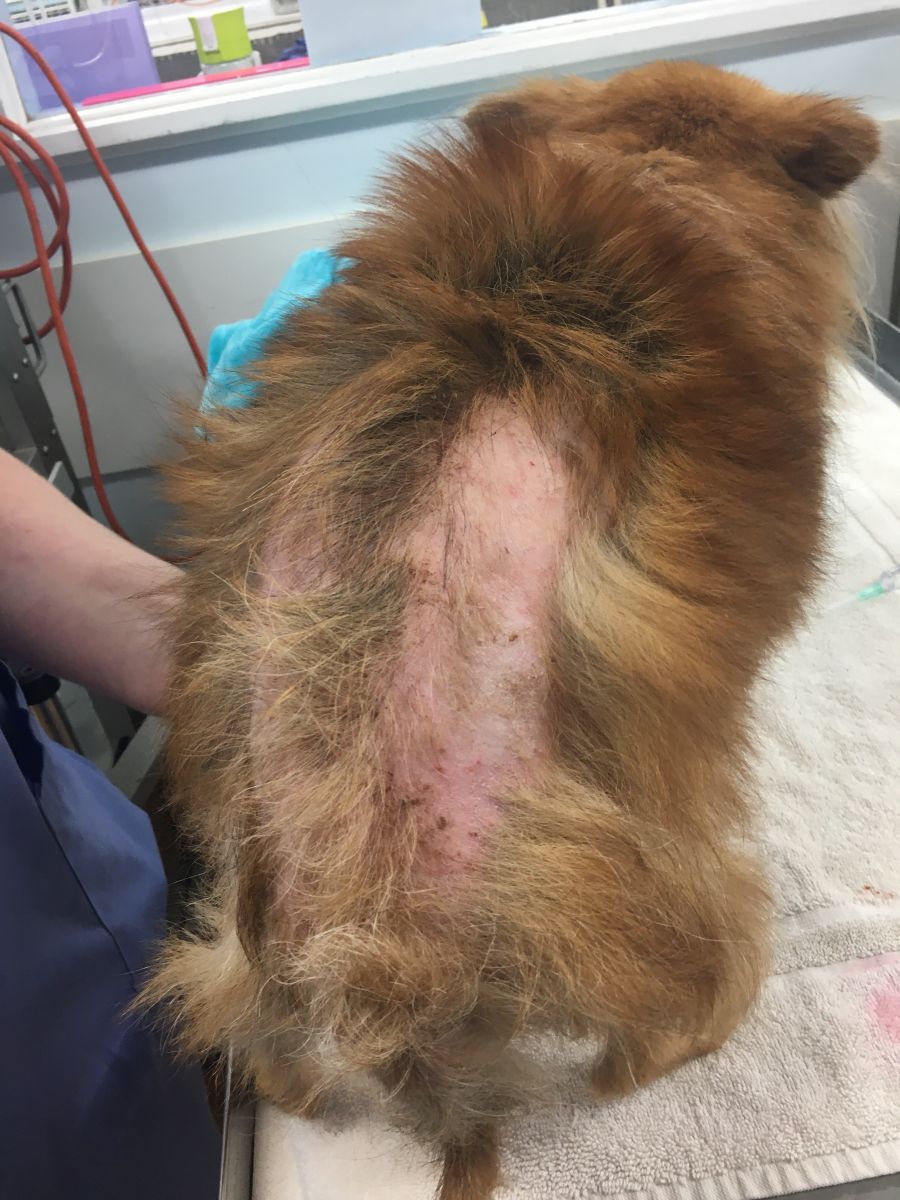
And the end of the day, puppy cuddles are the way to go!
